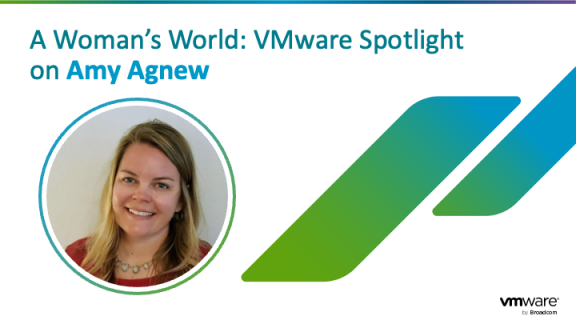Welcome to the second blog in the Cloud Management Professional Services series dedicated to all things CloudHealth®! In this blog we will discuss the CloudHealth implementation process within your multi-cloud environment and how VMware Professional Services can help your organization on its multi-cloud journey to achieve your outcomes faster.
What should my organization consider before implementing CloudHealth?
In our first discussion, we reviewed how to Manage Your Multi-Cloud Environment and Costs with CloudHealth, but how does your organization implement CloudHealth to make these dreams reality? Before implementation, your organization should clearly define its reporting needs and desired outcomes. Defining your organizational needs will help ensure that the CloudHealth platform is configured in a way for the organization to achieve the best outcomes while meeting needs of the business. Organizations may need to obtain input from its Operations Team, Security Team, FinOpsTeam, etc. to gain a clear level of insight and understanding for what the organization truly needs for cost management of its multi-cloud environment. Continued communication and input from these teams are critical for the successful implementation of CloudHealth.
If your organization requires a breakdown of costs by business unit, then you may need to review how the infrastructure is aligned to specific business units. Specific tagging strategies can be used to help these assets render correctly in different types of cost and utilization reports. It may be important for your senior management to see higher level of details while your infrastructure administrators may need a deeper level of analysis. They can then leverage the role-based access control, perspectives, and dashboard capabilities to get the proper view into their specific data. If needed, VMware Professional Services teams can provide guided workshops with key stakeholders so that your organization gets the information needed up-front to ensure a successful implementation of CloudHealth.
What are the key components your organization should implement?
Each organization will have a different set of priorities for managing their multi-cloud environment. However, there are some key components that most organizations find useful when implementing CloudHealth.
Perspectives
Perspectives enable you to create unique business groups that reflect different sets of data for analysis and evaluation criteria. These provide users with a view into different asset business groupings, such as by owner or team, or even cost center. Perspectives provide users with different lenses into their multi-cloud environment. These perspectives can then be leveraged by the teams to report on assets with specific tags or other metadata.

For Example, the Owner Perspective is selected below to generate an AWS Cost History report:

Additional perspectives can be selected and leveraged for reporting within the filters selection highlighted above. To learn more about perspectives, check out the VMware Blog related to all things perspectives!
Budgets
Creating budgets within CloudHealth is an important component to ensure that an organization’s multi-cloud costs align with each potential business unit, project, or team. As shown below, budgets can be set up and reviewed based on the Perspective, such as the Line of Business.

Each business unit, such as Engineering and Finance, may have a budget that is defined when setting up that budget. A report can then be executed to review the actual spend versus the budgeted amount.

FinOps leaders can then use these reports for further analysis into the line of business or even rate negotiations in the future.
Cost Reallocation Rules
CloudHealth provides the ability to create rules to help understand all organizational cloud costs, both indirect and direct. These Cost Reallocation Rules help your team gain insight into the indirect cost of each resource. CloudHealth has the ability to implement rules to include tags, business units, and other metadata to provide a full insight into resource cost utilization. This is important so that all aspects of cloud costs are included in cost reporting.

Reports
Many different reports are available within the CloudHealth platform. Depending on configurations, reports can be scoped to certain users or organizational units within a customer tenant hierarchy. Out-of-the-box interactive reports are available across cost, usage, performance, security, and governance metrics. These basic reports can be segmented based on Perspectives and Budgets to gain deeper insight into the organization’s multi-cloud environment. FlexReports are a newer type of reporting that can be fully customized for an enhanced level of analysis. The image below is an example of an interactive report that shows the number of EC2 Instances by cost center. Learn more about FlexReports by checking out the CloudHealth blog!

Other Components
Other key components that are required to properly implement CloudHealth can include FlexOUs and user accounts, Role Documents, container cost distribution rules, governance policies, custom dashboards and report subscriptions. VMware Professional Services teams can work with your organization, utilizing cloud best practices and expertise, to help guide you through this process to get your CloudHealth platform setup so your organization can hit the ground running for cloud cost management and optimization.
Is there anything else my organization should consider when implementing CloudHealth?
It’s important to note that CloudHealth can aggregate data from leading cloud providers, including AWS, Azure, GCP, OCI, and VMware Cloud on AWS (currently in beta), as well as your on-premises infrastructure. If utilizing VMware vRealize Operations®, a bi-directional integration can be leveraged to import data center data into CloudHealth, or to pull public cloud cost data into vRealize Operations.
How can VMware Professional Services help?
To get value from your CloudHealth investments faster and realize the multi-cloud benefits, including increased agility, scalability, and speed of service delivery for new products and innovative services, VMware Professional Services can help! Our team has a range of services to help get you started with gaining visibility into managing and optimizing your multi-cloud environments and cloud spend:
- Leverage best practices to design, plan, and configure the CloudHealth platform
- Identify and prioritize key actions and recommendations to optimize costs, boost performance and improve governance
- Build Identify and define key reportings and Perspectives
- Allow for single percentage discounts for simple billing and unique rules for complex billing
If you would like to learn more about VMware’s Professional Services for CloudHealth, check out the Implementation Services, Governance Services and Optimization Services information pages. For additional information on the CloudHealth Suite of products, visit https://cloudhealth.vmware.com.






